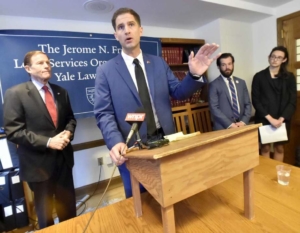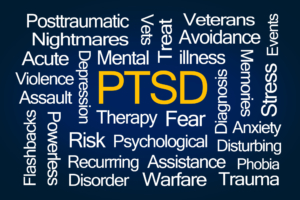Common Challenges to a Smooth Civilian Transition
Transition. According to Dictionary.com, it can be used as a noun or a verb, but in most cases it’s the “movement, passage, or change from one position, state, stage, subject, concept, etc. to another.” According to most of us that have worn the uniform recently, however, it means that we have taken that monumental step of separating from the military. And while the objective is usually to have a smooth-as-velvet transition, there always seems to be…challenges…to that goal.
For the rest of this post, I’m just going to pontificate on a few of those challenges, from my point of view. Many of you know that my perspective is that of a 30-year Army guy, but it’s also one that’s been influenced by dear friends from every branch of the Service. Some of these challenges were faced head-on by many of the strongest-willed men and women I know – with equal parts success and struggle.
And the point of a blog post like this one? Well, it’s doubtful you’ll have the ‘a-ha’ moment you’re looking for or have a revelation to put your struggle into deeper meaning…but maybe you’ll come to the realization that there are loads of warriors out there with the same struggles as you and I. And sometimes it’s good to reflect on the challenges…to a smooth transition…that we have in common.
Challenges within ourselves. Some of our biggest challenges during the transition from active duty to the civilian sector are internal. How we feel, how we cope with the change, how we internalize things…can have a tremendous impact on our new reality. Some of us feel the loss of our sense of purpose. Some struggle with no ‘command structure’ in place to help hold them accountable. Others feel like everything is so boring or ‘blah’ and miss the adrenaline rush that comes with certain assignments. And many of us feel isolated or alone, even when surrounded by family and friends with whom we’re desperately trying to reconnect.
Challenges with employment. Even if we qualify for an active duty retirement or VA compensation, most of us will be looking for our next job. And for sure, the job search can be traumatic enough, even if you’re not transitioning from military service. How a jobseeker goes about finding a job has undoubtedly changed…if you’re looking for your next job, you’ll have to craft resumes and cover letters, navigate applicant tracking systems, and deal with interviewers and talent managers. If you’ve already transitioned from the Service to a civilian employer, there’s a good chance you had to start a rung or two down the corporate ladder from where you should have been able to start, and you’re finding that often promotions come at a different pace and may be few and far between. Finally, if you’re a traditional National Guardsman or Reservist coming off a deployment and returning to your previous employer, you’ll probably face your own unique challenges with your old position, your team at work, and your supervisor. That’s a whole other topic in itself, and one we’ll cover later this year.
Challenges, period. If you aren’t wrestling with your own internal concerns and you have the job thing all figured out, consider yourself lucky (and maybe even among the fortunate few). But that doesn’t mean you won’t face other, just as stressful, challenges. Things you’ll need to take care of won’t be free, and often we underestimate the costs of transition. There’s a decent chance you’ll have to figure out who provides the services you’ll be using, from health care to child care and everything in between. You may still have bouts of post-traumatic stress or depression, for the simple fact that you’re in transition from military service means you’re moving on from one of the most impactful, stressful, demanding, and rewarding journeys a person can take.
At the end of the day, most of my colleagues just assume that this transition will be challenging, but it’s hard to predict how so. The transition between ‘military life’ and ‘life after military life’ will be different for everyone…different for retiring 40-somethings than for 20-somethings getting out after their first or second tour. What are some things you can do? Take advantage of the DoD’s Transition Assistance Program (TAP) and get smarter on those subjects that will impact you. During the transition, make sure you eat well, get plenty of rest & exercise, and plan your approach to this next stage of your life. Be your own advocate and reach out if you need a hand with the transition – to a battle buddy, a Vet Center, the VA, or a Veteran Service Organization. Until next time…

By Debbie Gregory.
U.S. District Judge Judith C. Herrera has ordered a former U.S. Forest Service ranger to pay nearly $600,000 to a disabled Army veteran and another camper for violating their civil rights by using excessive force during their 2014 arrests at the Juan Tomas campground in the mountains east of Albuquerque.
Former U.S. Forest Service Ranger David Chavez confronted Adam Griego, who served in the Army during two tours in Iraq and Afghanistan, and fellow camper Elijah Haukereid, advising them that the road to the campground was closed and that Griego would have to hike into the area to retrieve his belongings.
Griego found another route to rejoin his friends, which apparently angered Chavez, who handcuffed Griego and slammed his face into the hood of Chavez’s truck, and his head into the door frame of the truck.
Griego was forced to remain in the backseat of the truck for several hours without water despite the heat. Once Griego was secured, Chavez focused on Haukereid, who was recording his friend’s arrest on his cellphone.
Chavez slapped the phone out of Haukereid’s hand and threatened him with a taser. When Haukereid questioned Chavez’s order to get on the ground, Chavez commanded his dog to attack Haukereid.
Griego, a Purple Heart recipient, is 100 percent disabled veteran and suffers from both post-traumatic stress disorder and traumatic brain injury.
Herrera awarded Griego $450,000 in compensatory and punitive damages after finding that the beating he suffered made his combat injuries worse. Haukereid was awarded $140,000 in compensatory and punitive damages.
Although the judgement is directed at Chavez, normally his former employer would have to pay the judgment for his actions.
Military Connection salutes and proudly serves veterans and service members in the Army, Navy, Air Force, Marines, Coast Guard, Guard and Reserve, and their families.

By Debbie Gregory.
A marine veteran has filed a federal class-action lawsuit against the Navy, alleging that post-traumatic stress disorder and other traumatic mental health issues were the reason he and veterans like him received less than honorable discharges.
Due to these “bad paper” discharges, the veterans have been denied VA benefits and other support.
The lawsuit, filed in federal court in Connecticut by Tyson Manker, seeks class-action status for thousands of Navy and Marine Corps veterans.
“The American public needs to know that hundreds of thousands of military veterans with service-connected PTSD and [traumatic brain injuries] are being denied support and VA resources because of an unfair discharge status,” said Manker.
The plaintiffs are being counseled by the Yale Law School Veterans Legal Services Clinic.
“In 2017, the Army and Air Force Discharge Review Boards granted approximately 51 percent of discharge upgrade applications involving PTSD, while the NDRB [Naval Discharge Review Board] granted a mere 16 percent of applications during the same period,” said Samantha Peltz, a law student intern in the Yale Veterans Legal Services Clinic. “The disparity is staggering.”
Manker is joined in the lawsuit by the National Veterans Council for Legal Redress, a Connecticut-based organization whose members include marines and other veterans with less-than-honorable discharges.
In a statement released by the plaintiffs, U.S. Sen. Tammy Duckworth (D-IL) said that the unfair discharge status is “based on antiquated policies that fail to recognize invisible wounds like post-traumatic stress.”
“Systemic failures of the military departments have led to widespread legal rights violations of our most vulnerable men and women in uniform, myself included. It is a national disgrace,” Manker said. “By taking this action with the courts we intend to restore the rule of law along with honor for thousands of patriots who were treated so poorly by the nation they served.”
Military Connection salutes and proudly serves veterans and service members in the Army, Navy, Air Force, Marines, Coast Guard, Guard and Reserve, and their families.

By Debbie Gregory.
With an increase in post-traumatic stress disorder (PTSD) diagnoses within the veteran community, the Department of Veterans Affairs is joining forces with non-profit Canine Companions to study how service dogs might be able to aid those struggling with the disorder.
The joint pilot program is launching at Canine Companions’ Northwest Training Center in Santa Rosa, CA, with the initial participants being chosen within 90 miles of the Santa Rosa facility.
The dogs will be trained in tasks including nightmare interruption, turning on lights, retrieving items, and supporting their handler in crowded public situations that might provoke anxiety for individuals with PTSD.
In the future, Canine Companions hope to expand the program to include first responders (police, fire and emergency medical personnel) with PTSD. They also hope to expand the program geographically.
The study will piggyback on a less formal program the VA kicked off in 2014, although this study will be more comprehensive and more tightly controlled.
“We believe that dogs can be trained in tasks that can help mitigate aspects of PTSD and help someone in their process of recovery along with other resources that exist already,” said instructor Sarah Birman.
Canine Companions will choose the dogs that will participate in the program based on their temperament, confidence and energy levels. They will need to be able to resist reacting to outside stimuli. The organization hopes to place some 20 dogs during the first year of the study.
“Service dogs are another tool that is available to veterans,” she said. “I think the more options that we make available to people the more people will be able to hopefully find something that works for them. PTSD can be an incredibly debilitating condition and really tremendously isolating, and so, if through these dogs we can make a difference in the lives of even just a handful of veterans, then it will absolutely have been worth it.”
Canine Companions has been providing service dogs for people with physical disabilities since 1975.
Military Connection salutes and proudly serves veterans and service members in the Army, Navy, Air Force, Marines, Coast Guard, Guard and Reserve, and their families.

By Debbie Gregory.
Stress is the enemy of mental and physical health. It is believed that most veterans experience high levels of stress during the transition to civilian life, however transition stress has received very little attention in the shadow of post-traumatic stress disorder.
While PTSD has become a much-discussed affliction, transition stress, a seemingly more prevalent problem, is going largely overlooked.
The crucial role of transition stress in the lives of military veterans is examined in a recent essay by George A. Bonanno, a professor of clinical psychology at Columbia Teachers College, and former Army officer and Ph.D student Meaghan Mobbs.
In their abstract, Bonanno and Mobbs say that the wider range of challenges, rewards, successes, and failures that transitioning veterans might experience contribute to transition stress, which can be mistaken for PTSD.
While serving, there is the mission, the job, the camaraderie and the bonds. When servicemembers transition to civilian life, that sense of purpose and fulfillment can be lost, leading to anxiety, depression, and other behavioral difficulties.
“For our generation of veterans, for us being an all-volunteer force, we all go in during a period of emerging adulthood,” said Mobbs. “We’re typically asking ourselves the existential questions: Who am I? What do I want to do? What’s the meaning of life? And the military provides a really ready answer for that. They tell you: You have purpose. What you’re doing is meaningful. You matter.”
The Transition Assistance Program (TAP) provides information, tools and training to ensure service members and their spouses are prepared for the next step in civilian life whether pursuing additional education, finding a job in the public or private sector or starting their own business.
But often times, this week-long class doesn’t check all of the boxes.
Bonanno thinks that a mentor-based approach, with mentors assigned to veterans as they leave the military to just help with the daily things of life and understanding the transition process would provide great value.
“Some of the difficult things are just reintegrating with friends and families and managing those relationships.”
Military Connection salutes and proudly serves veterans and service members in the Army, Navy, Air Force, Marines, Coast Guard, Guard and Reserve, and their families.

By Debbie Gregory.
The Department of Veterans Affairs (VA) has launched a new online wizard that will assist veterans who are seeking to upgrade their military discharges.
By going to the VA’s Vets.gov benefits website, participants go through a series of questions that guides them, step by step, through the upgrade process based on their individual situation.
This is an especially good tool for veterans who are trying to correct or upgrade “bad paper” discharges. Veterans with bad paper discharges have long complained that they were drummed out of the service with no consideration of their invisible wounds.
All branches of the military consider a strong case for a discharge upgrade if applicants can show their discharge was connected to any of these categories:
Mental health conditions, including Post Traumatic Stress Disorder (PTSD)
Traumatic brain injury (TBI)
Sexual assault or harassment during military service
Sexual orientation (including under the Don’t Ask, Don’t Tell policy)
By answering a series of questions, users get customized step-by-step instructions on how to apply for a discharge upgrade or correction. If their application goes through and the discharge is upgraded, these veterans will become eligible for the VA benefits they earned during their period of service.
If a previous upgrade application was denied, users can apply again, especially if the application is significantly different from the original. For example, the applicant may have additional evidence that wasn’t available during the original application was processed, or the Department of Defense (DoD) may have issued new rules regarding discharges. (DoD rules changed for discharges related to PTSD, TBI, and mental health in 2014, military sexual harassment and assault in 2017, and sexual orientation in 2011.)
The wizard will also assist those who require an updated DD214 or DD215 to reflect an upgrade.
Military Connection salutes and proudly serves veterans and service members in the Army, Navy, Air Force, Marines, Coast Guard, Guard and Reserve, and their families.

By Debbie Gregory.
In a continuing effort to treat Post-traumatic Stress Disorder (PTSD) and reduce the number of veteran suicides, the Department of Veterans Affairs has approved hyperbaric oxygen therapy (HBOT) to some veterans with PTSD.
In a hyperbaric oxygen therapy chamber, the air pressure is increased to three times higher than normal air pressure. Under these conditions, your lungs can gather more oxygen than would be possible breathing pure oxygen at normal air pressure.
It’s suggested that the oxygen-rich environment produced in the brain during a HBOT treatment stimulates the growth of new neurons and neural pathways, although further research is necessary.
HBOT treatment is currently only available to veterans served in the eastern Oklahoma and Northern California VA health care systems. Only veterans who haven’t noticed a decrease in PTSD symptoms from two other, evidence-based treatments are eligible.
Hyperbaric oxygen therapy involves breathing pure oxygen in a pressurized room or tube. HBOT uses pressurized hyperbaric chambers to deliver high oxygen levels.
“There is nothing more important to us than caring for our nation’s veterans, and that care must include finding different approaches that work best for them,” said VA Secretary David Shulkin.
HBOT is normally used to treat carbon monoxide poisoning, decompression sickness, and wounds that won’t heal. It has also been used for stroke victims, autism, cerebral palsy, cancer, fibromyalgia and lyme disease. Now HBOT is being used on patients with Traumatic Brain Injury (TBI) as well as PTSD.
The VA intends to use its new research to determine whether hyperbaric oxygen therapy should be made available to more veterans with PTSD, the agency said.
Military Connection salutes and proudly serves veterans and service members in the Army, Navy, Air Force, Marines, Coast Guard, Guard and Reserve, and their families.

By Debbie Gregory.
A Veterans Administration (VA) investigation has revealed that VA facilities in Denver, Golden and Colorado Springs failed to follow proper protocol when keeping tabs on patients who sought referrals for treatment of mental health conditions such as post-traumatic stress disorder.
The “off-book” lists did not always contain complete information or request dates, calling into question whether veterans requesting care received it and how long they had to wait for it.
Unofficial wait lists have been used by VA health care facilities elsewhere. The discovery of the lists created a nationwide scandal in 2014 when 40 veterans died while waiting for appointments at a Phoenix VA hospital.
Whistleblower Brian Smothers said the problems found in Colorado reach across the VA system. He worked on the VA’s PTSD support team in Denver and said he resigned in November 2016 after he was retaliated against for speaking up.
Smothers alleges that Colorado VA facilities in Denver and suburban Golden used unauthorized wait lists for mental health services from 2012 until last September. He said the longer that veterans have to wait for mental healthcare, the less likely they are to use it when it becomes available.
“It was totally unacceptable to me,” he said.
Smothers estimated the lists contained 3,500 entries but did not know how many individual veterans were on them because some names appeared multiple times. It was not immediately clear how long veterans on the lists had to wait for care.
Unofficial wait lists have been used by VA health care facilities elsewhere. The discovery of the lists created a nationwide scandal in 2014 when 40 veterans died while waiting for appointments at a Phoenix VA hospital.
According to Smothers, “VA management knew that these wait lists were absolutely forbidden.” “But they directed the use of these wait lists anyway.”
Military Connection salutes and proudly serves veterans and service members in the Army, Navy, Air Force, Marines, Coast Guard, Guard and Reserve, and their families.

By Debbie Gregory.
More than 20 percent of veterans receiving federal disability are suffering from post-traumatic stress disorder, a figure that has tripled in the last decade, from approximately 345,000 cases in fiscal 2008 to more than 940,000 cases today.
This includes all age groups, not just veterans from the recent wars.
PTSD symptoms usually start soon after the traumatic event, but they may not occur until months or years later. They also may come and go over many years. If the symptoms last longer than 4 weeks, cause great distress, or interfere with work or home life, the individual probably has PTSD.
Some of the common symptoms of PTSD include:
PTSD can happen to anyone. It is not a sign of weakness. A number of factors can increase the chance that someone will develop PTSD, many of which are not under that person’s control. Both the VA and Defense Department have worked in recent years to combat the stigma of seeking help for mental health issues.
PTSD is treatable. Many places within VA provide PTSD treatment. General programs that provide mental health services include VA medical centers, community-based outpatient clinics (CBOCs), and Vet Centers.
Vet Centers also offer services to families of Veterans for military-related issues. There are no fees or charges for Vet Center services, and services are confidential.
Military Connection salutes and proudly serves veterans and service members in the Army, Navy, Air Force, Marines, Coast Guard, Guard and Reserve, and their families.

© 2006-2020 Military Connection, Owned by BL, LLC. All rights reserved